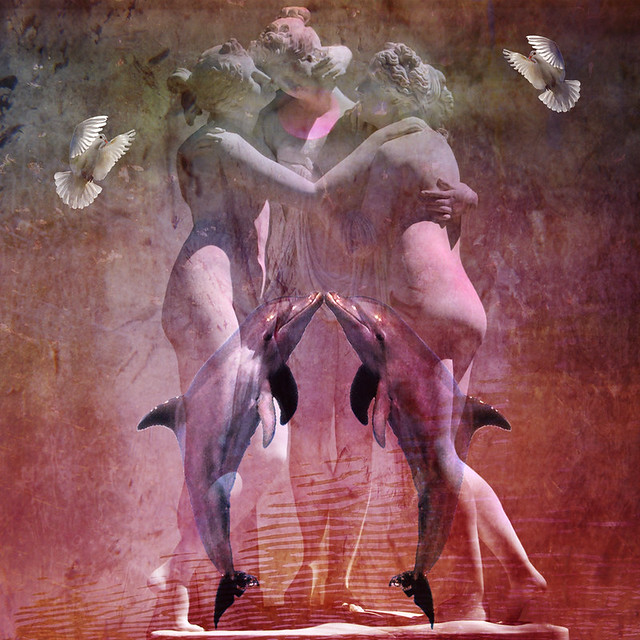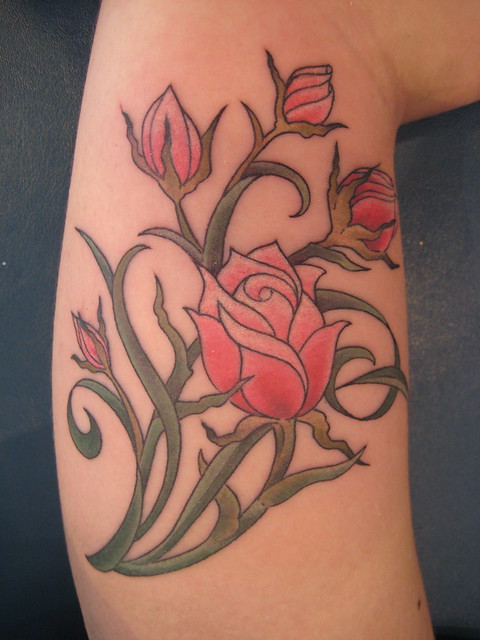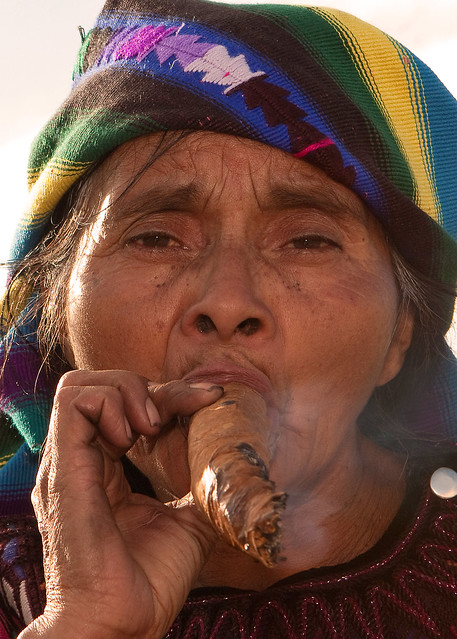The tools and trappings of Witchcraft are many and varied. While many of them, such as the broomstick and the witch's cauldron, are very familiar among most of the population, most magickal tools used by practitioners of Wicca and Witchcraft are either unknown or vastly misunderstood. This article will address the uses of many of the most popular magickal tools out there, and, hopefully, banish some of the misconceptions out there.
The specific tools addressed are:
- The Athame
- The Wand
- The Cauldron
- The Altar
- Book of Shadows
The Athame
The Athame is probably the most misunderstood of all of the magickal tools addressed here. What is an athame, anyways? It is a ritual dagger that utilized by witches during rituals and ceremonies. It is generally a double-edged blade made from steel, iron or, for the wealthier wiccans out there, silver. The hilt of the blade is most often black, and painted or engraved with a variety of occult symbols.
 |
| The Athame is a ritual knife used in the witchcraft religion of Wicca. (Photo credit: Wikipedia) |
Stories and movies, which often depict a witch as bad guy, often glamorize the athame as a sinister weapon that is used in sacrifices and other outlandish practices. This could NOT be further from the truth! The true purpose of this tool is as an aid for the practitioner to direct their will in ritual. It is never used to cut anything physically, and if it does, it is considered tainted and cannot be used until some extensive 'psychic cleansing' can be done.
For those who practice Witchcraft, the athame is a representation of the element of air and mental energy. It is one of the most used, and often most cherished, of their ritual tools.
The Wand
The wand is another very common item used in Witchcraft. The image it brings to mind is very accurate. It is a length of wood, about the same length as the individual witch's forearm. It can be constructed from a variety of materials, and the magickal properties of the tree from which it is cut often play a major role in its choosing. The look and style of the wand is as varied as the people who carry them. They are often decorated with crystals, stones, feathers and ribbons.
The uses of the wand are very similar indeed to those of the athame. It is used to direct one's will in ritual or ceremony. However, the biggest difference with the wand is that it is often the preferred means of repelling negativity away from its user. As such, it is often the tool of choice for rituals involving purifying and cleansing.
The Cauldron
Now, this is a misunderstood tool indeed! When one brings to mind the image of a witch's cauldron, the phrase, "bubble, bubble, toil and trouble..." is often right there with it. People seem to think that witches like to brew up some of the strangest things in their cauldrons. Though the cauldron is used as a magickal mixing bowl, the ingredients are often found in the average kitchen pantry. For a witch, the cauldron represents the element of water and the energies of emotions and feeling. In ritual, the cauldron often serves in preparing infusions for a magickal bath, tinctures for a variety of uses, or simply a fireproof container in which to burn a piece of parchment.
The Altar
This is another tool that is often very misunderstood. In the Hollywood version, the altar is the creepy table decorated with skulls and black candles where the victim is tied up helplessly. Try explaining that one to the neighbours!!
In real Witchcraft, there are two main types of altars out there: The functional, ritual altar, and the altar that serves as a shrine to honour a specific deity. The shrine-type altar is pretty self-explanatory. It is a special place to connect with a specific deity, and decorated with items that either represent or are associated with that deity.
A functional altar is one that is used during the majority of Wiccan rituals and is often the centrepiece of the ceremony. It is the place where Wiccans do most of the "dirty work" of burning candles, spilling ink, and burning incense. It is a focal point for their ritual intent and the spot in the ritual circle where they connect and pray to their Deity.
Book of Shadows
This is the quintessential spell book carried by every witch out there. There are so many ways to describe this particular item. To begin, let us just say that the Book of Shadows is a combination of a journal, a how-to manual, song book, and spell book.
One of the most common things found in a book of shadows is the Wiccan Rede. This is basically a code of conduct that witches follow, and an empowering bit of prose. Also commonly found within one of these books is a piece called The Charge of The Goddess, or simply "The Charge". This is a very elegantly written piece of poetry that both empowers practitioners of Witchcraft, and reminds them of their common values and beliefs. Both of these items are often included in Wiccan ceremonies.
Aside from that, the contents of a Book of Shadows can be almost anything. Most witches include their favourite rituals, incense recipes, correspondence charts and other difficult-to-memorize magickal tidbits.
These are some of the most commonly found magickal tools used for Witchcraft. There are much more out there. However, it would take much more than a single article to encompass them all. The most important thing to remember is that these are all just tools. To perform real magick, all a good witch needs is their mind. Any tool you find is more of focus of your intent, and a signal to your subconscious. The will and energy that you put forth are what really counts.
|













